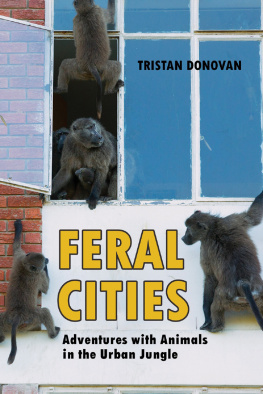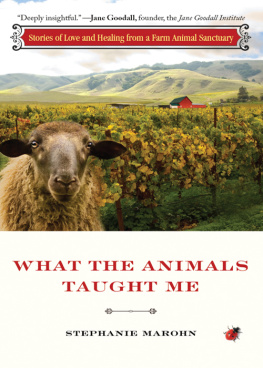Animal Hospital
Rescuing Urban Wildlife
Julia Coey


Published by Firefly Books Ltd. 2016
Copyright 2015 Firefly Books Ltd.
Text copyright 2015 Toronto Wildlife Centre
All rights reserved. No part of this publication may be reproduced, stored in a retrieval system, or transmitted in any form or by any means, electronic, mechanical, photocopying, recording or otherwise, without the prior written permission of the Publisher or a license from The Canadian Copyright Licensing Agency (Access Copyright). For an Access Copyright license, visit www.accesscopyright.ca or call toll free to 1-800-893-5777.
Publisher Cataloging-in-Publication Data (U.S.)
Coey, Julia, 1977- .
Animal hospital : rescuing urban wildlife / Julia Coey.
[64] pages : color photographs ; cm.
Includes index.
Summary: Animal Hospital follows the activities of an urban animal rescue facility and the efforts of the trained professionals that rescue, treat, rehabilitate and hopefully release the animals. The book explains medical triage and provides instructions on first aid steps and how to contact wildlife experts for people who discover injured animals. -- Publisher.
ISBN 13: 978-1-77085-572-4
ISBN-13: 978-1-77085-571-7 (pbk.)
1. Veterinary hospitals Juvenile literature. I. Title.
636.0832 dc23 SF604.55C649 2015
Library and Archives Canada Cataloguing in Publication
Coey, Julia, 1977-, author
Animal hospital : rescuing urban wildlife / Julia Coey.
Includes index.
ISBN 978-1-77085-572-4 (bound).-
ISBN 978-1-77085-571-7 (pbk.)
1. Wildlife rehabilitation--Juvenile literature. 2. Wildlife rescue--Juvenile literature. 3. Toronto Wildlife Centre--Juvenile
literature. 4. Toronto Wildlife Centre. I. Title.
SF996.45.C64 2015 j639.96 C2015-902974-0
Published in the United States by
Firefly Books (U.S.) Inc.
P.O. Box 1338, Ellicott Station
Buffalo, New York 14205
Published in Canada by
Firefly Books Ltd.
50 Staples Avenue, Unit 1
Richmond Hill, Ontario L4B 0A7
The publisher gratefully acknowledges the financial support for our publishing program by the Government of Canada through the Canada Book Fund as administered by the Department of Canadian Heritage.
Introduction

n 1992, wildlife biologist Nathalie Karvonen was working at a humane society in Toronto when she noticed a pressing need for wildlife rehabilitation services. Not only were there few options for sick, injured and orphaned wildlife, there was a lack of information and support for the people who wanted to help. In response, she founded the non-profit organization Toronto Wildlife Centre in 1992 with a handful of dedicated volunteers. What started as a basic wildlife information hotline run from a single phone is now a full service wildlife hospital and rehabilitation center with a dedicated rescue team.
Today, Toronto Wildlife Centres hotline is run by a team of staff and volunteers who handle tens of thousands of calls each year. Over 80,000 sick, injured and orphaned wild animals representing more than 270 different species have been helped approximately 5,000 animals a year. This is only the tip of the iceberg. All around the world, hundreds of thousands of wild animals are hurt by direct and indirect contact with humans. But wildlife rehabilitators are changing these odds.
This book tells the story of wildlife rehabilitation through the work of one of the busiest wildlife rehabilitation centers in Canada, and was made possible by Toronto Wildlife Centres dedicated staff, volunteers and donors. Thank you for changing the world one animal at a time!
To learn more about the center and how you can help sick, injured and orphaned wild animals visit www.torontowildlifecentre.com

This baby Eastern gray squirrels leg was put in a splint and cast after an x-ray revealed a fracture.

A Dangerous World


n an urban landscape of concrete and cars, it sometimes seems impossible that anything wild could survive. Wild animals are creatures of the forests, the skies and the streams, not cities made of concrete and glass.
The common belief is that we have encroached on wild animals, building over their habitat and forcing them into smaller and smaller patches of green space. But is that really the case? Yes, as cities grow, forests do disappear to fuel a world bent on expansion. This is not, however, the whole story. Some wild animals have evolved alongside humans in the urban environment, and thrive because of cities, not despite them.
In large North American cities such as New York or Toronto, commonly seen animals like squirrels and pigeons share the streets with more cautious foxes and coyotes, who travel mostly under the cover of night. Hawks and falcons sit high atop buildings and power lines, and deer move invisibly through the cityscape by sticking to green corridors. In Toronto, more than three hundred species of birds, mammals, reptiles and amphibians are roaming the streets, lakes, rivers and green spaces.
This largely unseen wild world is filled with creatures that have adapted to city living in fascinating ways. But in these close quarters, conflicts with humans are inevitable and when they happen, its often the wild animal that loses.

Young Canada Goose goslings trapped on a highway
Changing the Odds



Unlike zoos or wildlife sanctuaries that provide long-term homes for animals, wildlife rehabilitation centers aim to return a wild animal to its natural environment as quickly as possible. Contact with humans is kept to a minimum in order to reduce stress and to prevent habituation.

ildlife rehabilitation is about changing the odds. Wildlife rehabilitators help sick, injured and orphaned wild animals with the goal of restoring them to health and releasing them back into the wild. They are experts in the natural history of the wild animals they are helping. Some are wildlife biologists or veterinary technicians; others are animal lovers with lots of hands-on experience. Some work out of their home, while others are part of a bigger organization, like Toronto Wildlife Centre (TWC), working alongside a wildlife veterinarian.
























